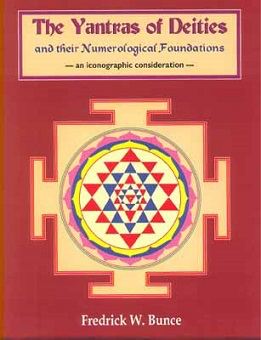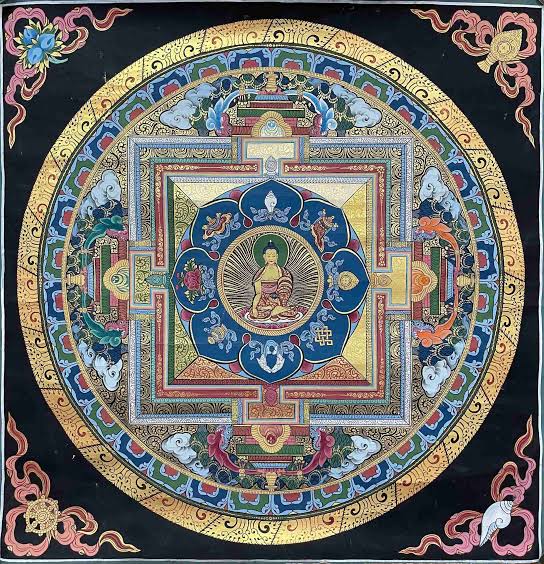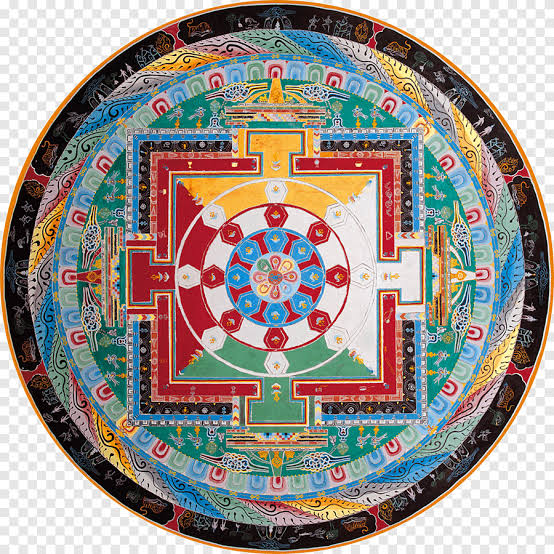Pratiksha Shome
The root ‘yam’, which means to hold or support, is where the term ‘yantra’ originates from in Sanskrit. As a result, a yantra is thought of in metaphysical terms as a container for the purest spiritual essence.
A Yantra is a pure geometric arrangement made up of the original, most fundamental shapes. These forms are psychological symbols that represent the interior states of awareness in people. Spiritual presence is linked to this composition’s inherent simplicity. Because the symbol is projected in such a clear and strong manner, even a small miniature can evoke a sense of expansiveness, the use of such simple shapes is not simplistic but rather reflects the highest conception in terms of visual quality.
The pursuit of geometric order is what gives tantric imagery its dynamic quality. A yantra depicts a certain configuration, and the more precise and abstract the diagram is, the more potent the configuration is. The expansion of a yantra occurs in stages as it moves outward from its centre. Several concentric figures that participate in this expansion are arranged around the centre. This yantra’s volume is defined by its concentric construction, which also generates a rhythmic coherence.
The point, line, circle, triangle, square, and lotus sign are the most common basic shapes from which yantras are made. To achieve the desired result, all of these forms are put together, joined, intersected, and repeated in different ways.
The symbolism of Yantra can be divided into 5 parts:
1) Point or Bindu
2) straight line
3) Triangle
4) Circle
5) square
The point/Bindu:
The metaphor of a spider sitting at the centre of its web, issuing and reabsorbing its threads in concentric circles, all held at one spot, appears in the Brihadaranyaka Upanishad. Although the spider’s threads symmetrically spread forth into a discernible perimeter, they all connect to the web’s focal centre.
The yantra’s centre, like the spider in its web, is the power source from which the entire diagram radiates and the source of energy that gives rise to all shapes. It is the heavenly essence from which the divided universe emerges. It is known as Bindu, the first drop, and it spreads out into the universe’s material realm. In fact, the centre of the yantra serves as the optical focus, from which force lines spread in concentric rings before dissolving in the outside circumference. The Bindu symbolises the union of the static (man, Shiva) and kinetic (female, Shakti) cosmic principles, which spread to form the limitless world of matter and spirit. This kind of spiritual oneness, where subject and object connect, is exactly what the tantric artist aims for. a place where the cosmos as a whole becomes one with the artist, the work, the creator, and the audience. The Bindu is the area where the aspirant’s ultimate connection with the divine occurs in the yantra’s final meditation.
The straight line:
A continuous set of points make up the straight line. These moving independent points give it length but not breadth. Thus, a straight line represents progress and growth and, like time, is made up of an unlimited number of distinct points.
The triangle:
Given that space can never be contained by fewer than three lines, the triangle is the prototypical representation of a sacred enclosure. Thus, it is believed that the triangle was the first closed form to appear when order was brought about by chaos. It is referred to as the source of all manifested nature in this manifestation. This primordial form is the crystallisation of the creative rhythm.
Tantra refers to the triangle’s shape as the “cone of fire.” This is the aspirational fire that never goes out in the soul of the spiritual seeker.
There are various ways to interpret the triangle’s three-fold structure. This includes visualisations like:
- Brahma, Vishnu, and Shiva, the gods of creation, preservation, and destruction.
- The neutral, positive, and negative: Sattva, Rajas, and Tamas.
- The Rig, Yaju, and Sam: the three Vedas.
- The past, present, and future.
- The spring, summer, and winter seasons.
- Prayag, Gaya, and Kashi are the three important pilgrimage sites.
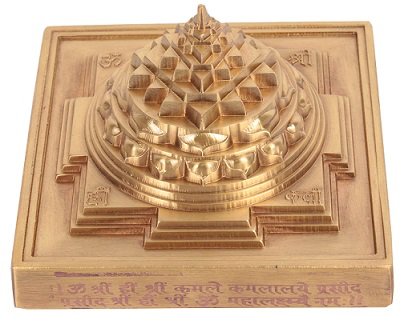
A triangle can be either upright or inverted when it is utilised in a yantra. The inverted triangle represents Shakti, the feminine power that is the source of all creation. The creative force in nature is a result of Shakti’s vitality. The first enclosure enclosing the tiny nucleus of most yantras is typically this inverted triangle.
The upward-pointing triangle represents the male principle, or Purusha. The fusion of polarities, the merger of Shiva and Shakti, male and feminine, is symbolised by the two triangles penetrating one another to form a hexagon. The cosmos as it is manifested is the result of this union.
Time and space vanish at the point where the triangles split, and all creative endeavour comes to an end. This is demonstrated by the hourglass shape of the Damaru, the Shiva drum, which is thought to be the source of all manifestation rhythms. It’s fascinating to note that Sanskrit, the oldest language in the world, is said to have derived its rhythms from Shiva’s drum in Panini’s treatise on the language’s grammar.
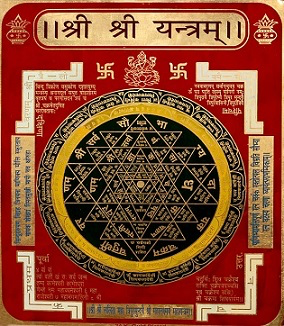
The circle:
The circle is a common motif in yantras and is mostly drawn from the motion of the planets’ revolution. It denotes the idea that has no beginning or conclusion, such as time, and it stands for fullness or totality. It represents the domain of radiation that emanates from the One centre and is a completely symmetrical entity that is equally spaced from the centre at all points. In other words, a limited area of influence.
A circle is typically positioned within a square design when utilised in a yantra.
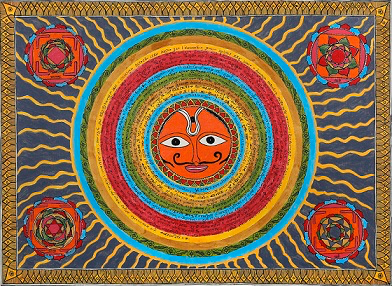
The square:
The most common yantra format is the square. There is a solid, well-considered reasoning behind it. There are four directions in the phenomenal universe. These four directions unite the planet in harmony and stand in for all of space. Due to its four perfectly straight, equal lines that define its shape, the square is also the most straightforward and ideal representation of the number four. As a result, it is seen as the ideal metaphor for the terrestrial world. It is necessary to transcend this ordinary, material reality by spiritual practice.
Four gates make up the square layout, one in each of the four cardinal directions. They are called cosmic doors because the aspirant enters the yantra through them figuratively. They stand for the transition from the material world to the yantra’s “inner,” sacred area. These gates are an initiatory threshold that embraces the noumenal while opposing the phenomenal. Further, it is thought that the gateways themselves are protected by divine forces, shielding the sacred area inside from destructive influences.
